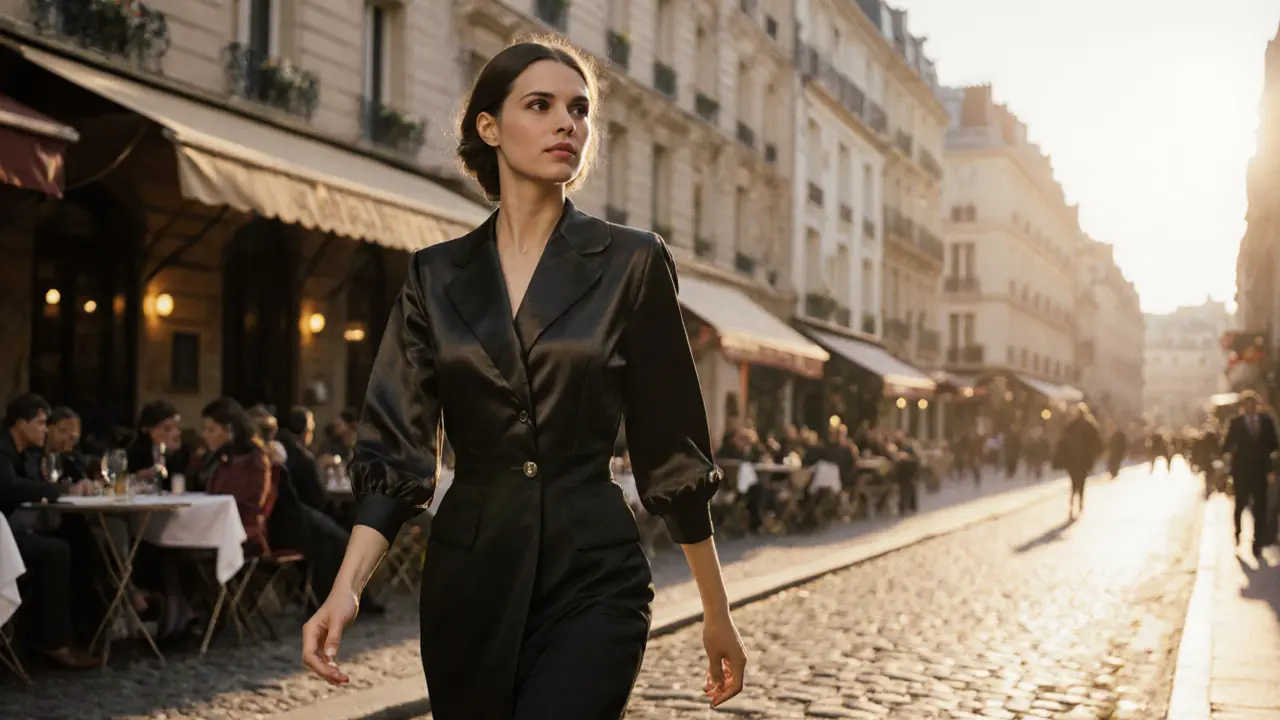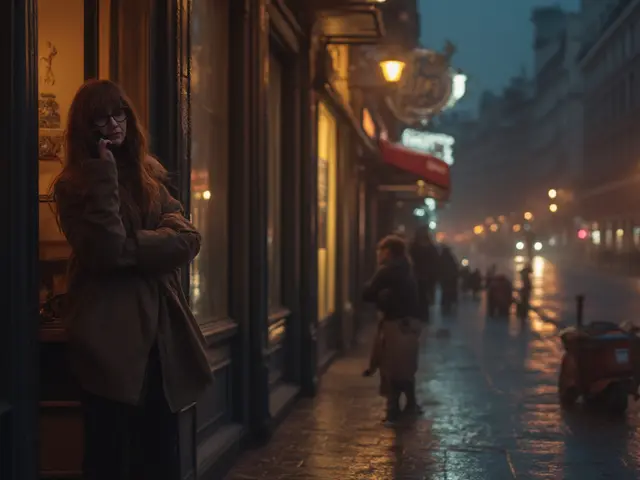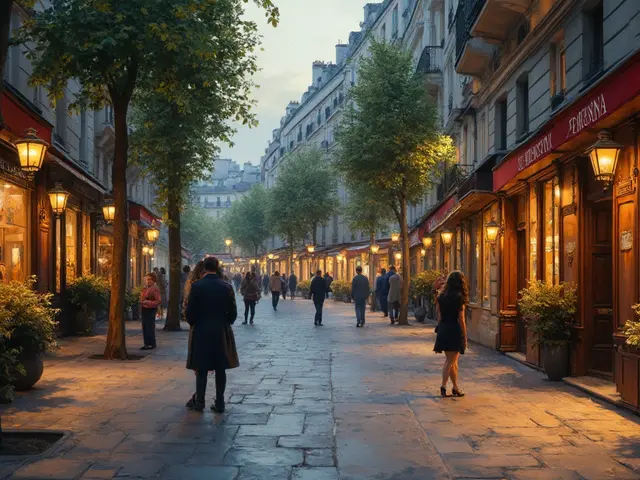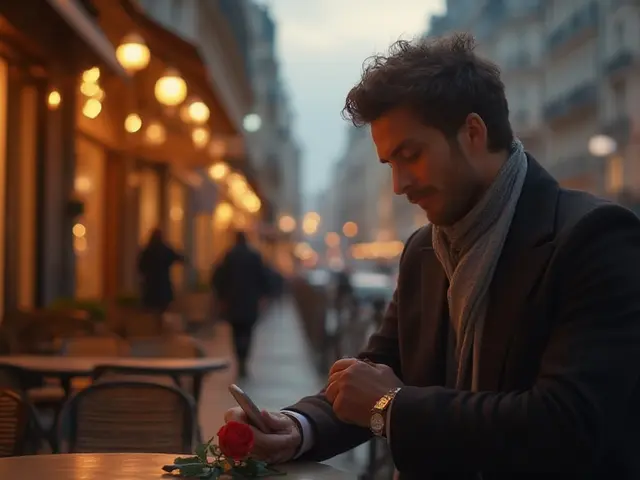Paris isn’t just a city of lights-it’s a city of surfaces. Every corner, every café, every alley tells a story through what people wear. And in the world of high-end escort services, fashion isn’t just background decor. It’s currency. It’s the first thing clients notice. It’s the unspoken contract between expectation and delivery.
The Uniform of Desire
You won’t find escort profiles in Paris that say, ‘I wear sweatpants and slippers.’ That’s not because it’s illegal. It’s because it doesn’t sell. The most successful escorts in Paris don’t just dress well-they curate an aesthetic that matches the client’s fantasy before a word is exchanged. A tailored black dress from a vintage Chanel boutique. A silk blouse with subtle lace trim. Shoes that click just right on cobblestones. These aren’t random choices. They’re strategic.One agency owner in the 8th arrondissement told me in 2024 that 73% of their clients chose an escort based on the first photo alone. Not the bio. Not the reviews. The outfit. The lighting. The way the fabric caught the light. That’s fashion as a filter.
Designer Labels as Trust Signals
In Paris, wearing a real Hermès scarf isn’t about status-it’s about verification. Clients aren’t just paying for company. They’re paying for a curated experience that feels exclusive, safe, and authentic. A well-placed logo, a recognizable silhouette, a specific shade of red from a limited-edition Dior handbag-these aren’t vanity items. They’re proof of access.Brands like Saint Laurent, Givenchy, and Balenciaga appear repeatedly in escort portfolios. Not because the escorts are rich. But because these labels signal a level of refinement that matches the price point. A client booking a €1,200-per-hour escort expects the same attention to detail they’d see in a Michelin-starred restaurant. The outfit is part of the service.
The Rise of the ‘Quiet Luxury’ Escort
Five years ago, flashy logos ruled. Now, the trend has flipped. The most in-demand escorts in Paris are those who wear minimalist, timeless pieces. Think: a cashmere turtleneck, perfectly pressed linen pants, a single gold ring. No visible branding. No oversized sunglasses. Just quiet confidence.This shift mirrors the broader luxury market. The new elite don’t want to scream their wealth-they want to whisper it. And the escort industry adapted. Agencies now train their models on how to style outfits that look expensive without being obvious. A €400 pair of Miu Miu loafers, worn with no socks and a slightly rolled cuff, says more than a full Gucci ensemble ever could.

Where Fashion Meets Function
It’s not all about looking good. It’s about moving well. An escort in Paris doesn’t just wear high heels-she wears heels she can walk in for three hours across Saint-Germain without limping. She doesn’t just wear a dress-she wears one that allows her to sit, stand, and lean without revealing too much or too little.Many escorts work with personal stylists who specialize in ‘performance fashion.’ These stylists know the difference between a dress that looks stunning on a mannequin and one that works under dim hotel lighting, in a moving car, or during a late-night dinner. They choose fabrics that don’t wrinkle, seams that don’t gap, and shoes with hidden cushioning. It’s fashion engineered for endurance.
The Parisian Code: Discretion Through Style
Parisians value subtlety. That’s why the best escorts don’t dress like they’re on a runway. They dress like they’re on their way to a gallery opening-or a private dinner with a lover. The line between escort and society woman is intentionally blurred. A client doesn’t want to feel like he’s hired a model. He wants to feel like he’s invited someone extraordinary into his world.That’s why many escorts own multiple wardrobes: one for daytime meetings in the 7th, another for evening dates in the 16th, and a third for private residences where anonymity matters. They change outfits like actors change roles. Each look is calibrated to the location, the client’s profile, and the mood they’re meant to evoke.
How Designers Are Indirectly Complicit
No major fashion house openly partners with escort agencies. But that doesn’t mean they’re disconnected. Many designers and boutique owners in Paris sell to clients who later become escorts. A seamstress in the Marais might alter a dress for a client who turns out to be an escort. A stylist at a boutique on Rue du Faubourg Saint-Honoré might help a woman pick out her ‘professional wardrobe’-never asking why.Some fashion schools in Paris quietly offer elective courses on ‘image consulting for discreet professions.’ These aren’t advertised. But they exist. And they teach students how to use color, cut, and texture to project confidence, mystery, and allure-skills that translate directly to the escort industry.
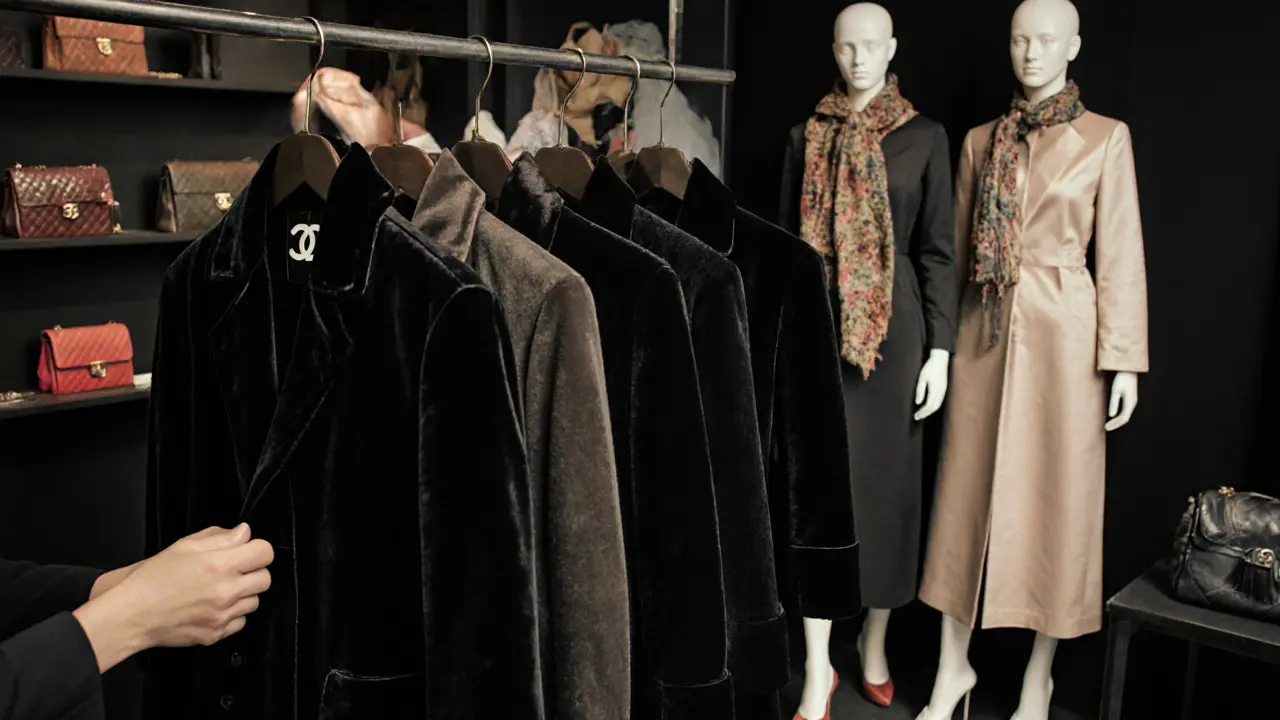
What Happens When Fashion Fails
Not every outfit works. And when it doesn’t, the consequences are immediate. One escort in the 6th arrondissement told me she lost three bookings in a week because she wore a dress with a zipper that kept slipping. Another was turned down because her shoes made too much noise on marble floors. Clients don’t say, ‘I didn’t like your outfit.’ They just don’t book again.There’s no room for error. A misplaced button, a wrinkled cuff, a scent that’s too strong-these aren’t minor flaws. They’re dealbreakers. In a city where taste is currency, fashion isn’t optional. It’s mandatory.
The Hidden Economy of Clothing
Behind every escort’s wardrobe is a hidden economy. Clothes are rented, swapped, or bought secondhand from high-end resale shops like Vestiaire Collective or Vinted Premium. A single evening gown might be worn by five different escorts in one month. The same Chanel coat might appear in five different profiles across four arrondissements.Agencies often maintain shared wardrobes. Clients don’t know this. They think they’re choosing a woman. They’re actually choosing a curated look-a look that’s been tested, refined, and approved by a team of stylists, photographers, and managers.
Is This Really Fashion? Or Just Performance?
Some might call it superficial. Others call it art. In Paris, the line is thin. Fashion has always been about identity, desire, and projection. The escort industry just takes it to its most literal extreme. Here, clothing isn’t an expression of self. It’s a tool to create a fantasy-and make it feel real.And in a city that worships beauty, illusion, and elegance, that’s not exploitation. It’s execution.
Do escorts in Paris have to wear designer clothes?
No, but the most successful ones do. While it’s possible to work without designer labels, clients in Paris expect a certain level of polish. Real or simulated luxury-like high-quality replicas or vintage pieces that look authentic-helps build trust and justify higher rates. It’s not about the brand name. It’s about the impression it creates.
How do escorts afford expensive clothing?
Most don’t buy outright. They rent, borrow, or swap through agency wardrobes. Some work with stylists who provide pieces on consignment. Others buy secondhand from luxury resale platforms. A single designer dress might be worn by five different escorts in a month. It’s a shared resource, not a personal collection.
Is there a difference between fashion in Paris and other cities?
Yes. In cities like London or New York, boldness and individuality are rewarded. In Paris, subtlety wins. The best-dressed escorts here avoid logos, loud colors, and trends. They focus on fit, fabric, and silence. A well-tailored black dress says more in Paris than a full Gucci outfit would in Miami.
Do fashion brands know their clothes are used by escorts?
Some do, but they never admit it. Designers sell to anyone who can pay. Boutique owners in Paris know their clients include escorts, but they don’t ask questions. The industry operates in silence. As long as the clothes are paid for, the source doesn’t matter.
Can someone become an escort without knowing fashion?
It’s possible, but extremely difficult. Clients in Paris judge quickly, and fashion is the first filter. Without understanding how to dress for the city’s unspoken rules, even the most charming person will struggle to get bookings. Most newcomers work with stylists or agencies that provide wardrobe guidance from day one.
Paris doesn’t just attract those who want to be seen. It attracts those who understand how to be seen-and how to disappear at the right moment. Fashion is the bridge between those two states.
